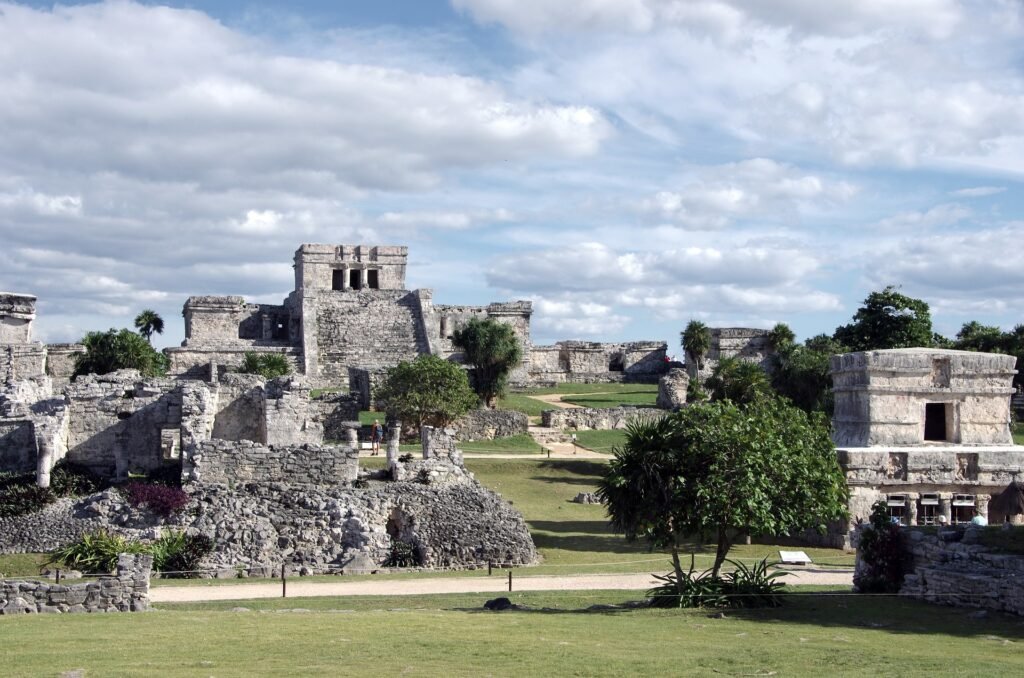Tulum, located on the eastern coast of the Yucatan Peninsula in Mexico, is not only renowned for its stunning beaches and vibrant culture but also for its rich Mayan heritage. One of the most fascinating aspects of Mayan civilization is their elaborate pantheon of gods and goddesses, each playing a vital role in the ancient beliefs and customs of the people of Tulum. In this comprehensive article, we delve into the world of Mayan deities and explore the significant gods and goddesses worshipped in Tulum.
Mayan Gods and Goddesses in Tulum
Kukulcan, the Feathered Serpent God
One of the most prominent deities in Mayan mythology is Kukulcan, also known as Quetzalcoatl. Represented as a feathered serpent, Kukulcan holds immense importance in the Mayan culture. This god is associated with various elements of nature, including water, wind, and creation. His presence is depicted through numerous temples and awe-inspiring artwork found throughout Tulum.
The most iconic representation of Kukulcan can be witnessed at the Temple of Kukulcan in Chichen Itza, a grand pyramid where every equinox, the sun casts a shadow that resembles a serpent descending down the stairs. This magnificent celestial phenomenon is a testament to the Mayan ingenuity in architecture and their deep connection with Kukulcan.
Ix Chel, the Mayan Moon Goddess
The sacred feminine energy in Mayan mythology is embodied by Ix Chel, the revered Moon Goddess. She represents fertility, marriage, love, and weather. Ix Chel is often depicted as a young seductress or a wizened old woman, symbolizing the cycle of life. Her influence is evident in the annual Sacred Maya Journey, a ritual procession from the island of Cozumel to the mainland of Tulum that honors Ix Chel’s role in the fertility of the land.
Itzamna, the Founder of Mayan Culture
Itzamna is regarded as the founder of Mayan culture, and he is associated with important aspects such as astrology, writing, and even healing. Often depicted as a wise but toothless old man, Itzamna holds significant influence in the understanding of the Mayan civilization. The city of Chichen Itza is believed to be founded by Itzamna, further solidifying his importance in Mayan history.
Buluc Chabtan, the Mayan God of War
Buluc Chabtan, the formidable Mayan God of War, was worshipped for his ability to grant success in battle. He represented war, violence, and sudden death. Mayan warriors would offer prayers and sacrifices to Buluc Chabtan in hopes of gaining his favor and protection in times of conflict. Artistic depictions often show him with a black line around his eyes, symbolizing his connection to Ah Puch, the God of Death.
Chaac, the Mayan Rain God
Chaac, known as the Mayan Rain God, held profound significance in agricultural practices. It was believed that Chaac was responsible for bringing rain and thunderstorms that nourished the crops. Depicted with a distinct appearance, including a large nose and reptile-like scales, Chaac served as a mediator between the gods and the people, ensuring the prosperity of the Mayan civilization.
Ah Puch, the God of Death
Ah Puch, the fearsome God of Death, ruled over the Mayan underworld. Often depicted in a state of decay, Ah Puch is associated with human sacrifices and the macabre aspects of death. The Mayans held both fear and reverence for Ah Puch, recognizing the delicate balance between life and the afterlife.
Kinich Ahau, the Mayan God of the Sun
The radiant Kinich Ahau, the God of the Sun, holds immense importance in Mayan culture. Represented as a jaguar, eagle, or deer, Kinich Ahau is associated with light, time, heat, and the four cardinal directions. The sun, as personified by this deity, played an integral role in the daily life of the Mayans, providing warmth, light, and the energy needed for agricultural activities.
Ek Chuaj, the God of Merchants and Cacao
Ek Chuaj, the God of Merchants and Cacao, portrays the duality of war, chaos, and destruction, as well as the prosperity associated with trade and commerce. Cacao was highly prized by the Mayans, and offerings and sacrifices were made to Ek Chuaj, including animals like dogs and blue iguanas, to ensure the success of economic endeavors.
Exploring the Temples in Tulum
The Temples of Tulum
Tulum is adorned with an array of temples that serve as a testament to the Mayan civilization’s spiritual devotion. Each temple has its own historical and cultural significance, offering a glimpse into the mythological beliefs and rituals of the Mayans.
Understanding Mayan Beliefs through Temples
Exploring the temples in Tulum provides an opportunity to deepen our understanding of Mayan beliefs and rituals. The intricate artwork and architectural motifs found within the temples offer clues about the deities worshipped and the rituals conducted. By interpreting these artistic expressions, visitors can gain valuable insights into the spiritual and cultural practices of the Mayans.
Additionally, the connection between the temples and the ceremonial events held by the Mayans can further enhance our understanding of their beliefs. The rituals and ceremonies performed in these sacred spaces reflected the Mayans’ deep respect for their gods and goddesses, as well as their desire to maintain a harmonious coexistence with the natural elements that surrounded them.
Conclusion
The gods and goddesses of Mayan mythology played a pivotal role in the lives of the people of Tulum, influencing their beliefs, rituals, and way of life. The temples and artwork dedicated to these deities still stand as vivid reminders of the ancient civilization that once thrived in this region. By exploring the temples of Tulum, one can uncover the secrets of Mayan society and gain a profound appreciation for the complex pantheon of gods and goddesses that enriched their lives. Embark on a journey to Tulum and immerse yourself in this mystical world, where the enigma of Mayan gods awaits your discovery.
